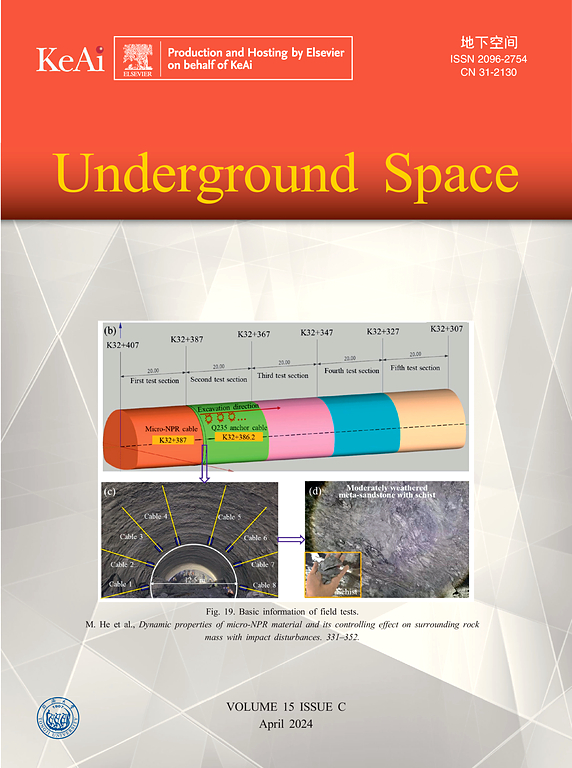Development of the Optuna-NGBoost-SHAP model for estimating ground settlement during tunnel excavation
IF 8.3
1区 工程技术
Q1 ENGINEERING, CIVIL
引用次数: 0
Abstract
This study aims to develop and evaluate a natural gradient boosting (NGBoost) model optimized with Optuna for estimating ground settlement during tunnel excavation, incorporating Shapley additive explanations (SHAP) to perform interpretability analysis on the model’s estimation results. The model’s predictive performance was comprehensively assessed using datasets from two earth pressure balance shield tunneling projects in Changsha and Zhengzhou, China. Comparative analyses demonstrated the superior accuracy and generalization capability of the Optuna-NGBoost-SHAP model (training set: R2 = 0.9984, MAE = 0.1004, RMSE = 0.4193, MedAE = 0.0122; validation set: R2 = 0.9001, MAE = 1.3363, RMSE = 3.2992, MedAE = 0.3042; test set: R2 = 0.9361, MAE = 0.9961, RMSE = 2.5388, MedAE = 0.2147). SHAP value analysis quantitatively evaluated the contributions of input features to the model’s estimations, identifying geometric factors (distance from the shield machine to the monitoring section and cover depth) as the most important features. The findings provide robust decision support for safety management during tunnel construction and demonstrate the reliability and efficiency of the Optuna-NGBoost-SHAP framework in estimating complex ground settlement scenarios.
隧道开挖过程中地面沉降估算的Optuna-NGBoost-SHAP模型的建立
本研究旨在开发和评估利用Optuna优化的自然梯度推进(NGBoost)模型估算隧道开挖过程中地面沉降,并结合Shapley加性解释(SHAP)对模型估算结果进行可解释性分析。利用长沙和郑州两个土压平衡盾构隧道工程的数据集,对该模型的预测性能进行了综合评估。对比分析表明,Optuna-NGBoost-SHAP模型具有较好的准确率和泛化能力(训练集:R2 = 0.9984, MAE = 0.1004, RMSE = 0.4193, MedAE = 0.0122;验证集:R2 = 0.9001, MAE = 1.3363, RMSE = 3.2992, MedAE = 0.3042;测试集:R2 = 0.9361,美= 0.9961,RMSE = 2.5388, MedAE = 0.2147)。SHAP值分析定量地评估了输入特征对模型估计的贡献,确定几何因素(从盾构机到监测段的距离和覆盖深度)是最重要的特征。研究结果为隧道施工期间的安全管理提供了强有力的决策支持,并证明了Optuna-NGBoost-SHAP框架在估算复杂地面沉降情景方面的可靠性和有效性。
本文章由计算机程序翻译,如有差异,请以英文原文为准。
求助全文
约1分钟内获得全文
求助全文
来源期刊

Underground Space
ENGINEERING, CIVIL-
CiteScore
10.20
自引率
14.10%
发文量
71
审稿时长
63 days
期刊介绍:
Underground Space is an open access international journal without article processing charges (APC) committed to serving as a scientific forum for researchers and practitioners in the field of underground engineering. The journal welcomes manuscripts that deal with original theories, methods, technologies, and important applications throughout the life-cycle of underground projects, including planning, design, operation and maintenance, disaster prevention, and demolition. The journal is particularly interested in manuscripts related to the latest development of smart underground engineering from the perspectives of resilience, resources saving, environmental friendliness, humanity, and artificial intelligence. The manuscripts are expected to have significant innovation and potential impact in the field of underground engineering, and should have clear association with or application in underground projects.
 求助内容:
求助内容: 应助结果提醒方式:
应助结果提醒方式:


